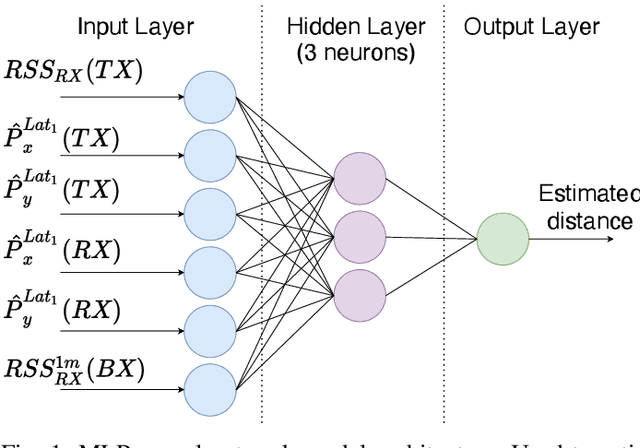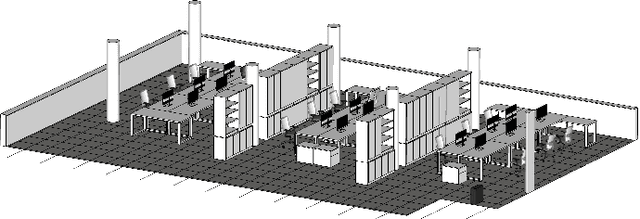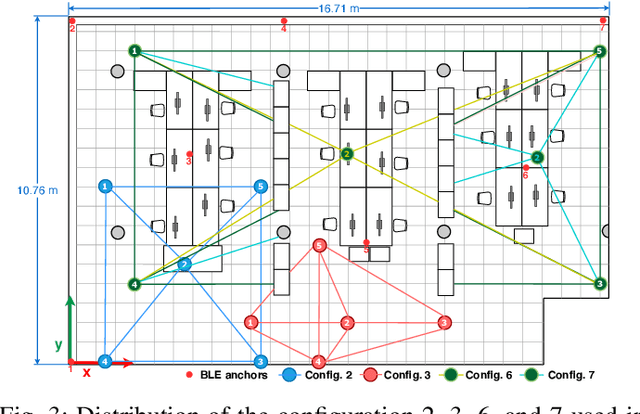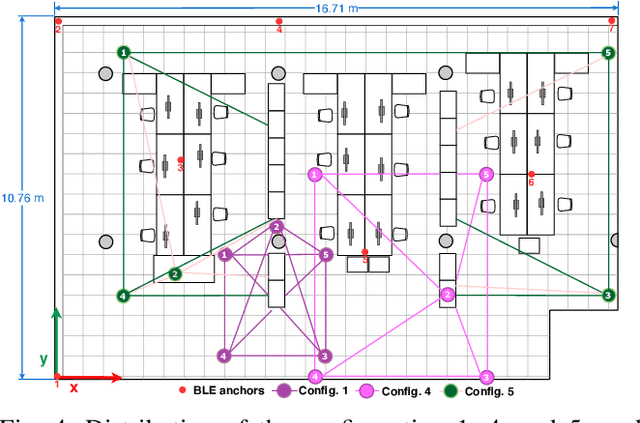Joaquín Torres-Sospedra
SURIMI: Supervised Radio Map Augmentation with Deep Learning and a Generative Adversarial Network for Fingerprint-based Indoor Positioning
Jul 13, 2022



Abstract:Indoor Positioning based on Machine Learning has drawn increasing attention both in the academy and the industry as meaningful information from the reference data can be extracted. Many researchers are using supervised, semi-supervised, and unsupervised Machine Learning models to reduce the positioning error and offer reliable solutions to the end-users. In this article, we propose a new architecture by combining Convolutional Neural Network (CNN), Long short-term memory (LSTM) and Generative Adversarial Network (GAN) in order to increase the training data and thus improve the position accuracy. The proposed combination of supervised and unsupervised models was tested in 17 public datasets, providing an extensive analysis of its performance. As a result, the positioning error has been reduced in more than 70% of them.
Exploration of User Privacy in 802.11 Probe Requests with MAC Address Randomization Using Temporal Pattern Analysis
Jun 22, 2022



Abstract:Wireless networks have become an integral part of our daily lives and lately there is increased concern about privacy and protecting the identity of individual users. In this paper we address the evolution of privacy measures in Wi-Fi probe request frames. We focus on the lack of privacy measures before the implementation of MAC Address Randomization, and on the way anti-tracking measures evolved throughout the last decade. We do not try to reverse MAC address randomization to get the real ad-dress of the device, but instead analyse the possibility of further tracking/localization without needing the real MAC address of the specific users. To gain better analysis results, we introduce temporal pattern matching approach to identification of devices using randomized MAC addresses.
A Collaborative Approach Using Neural Networks for BLE-RSS Lateration-Based Indoor Positioning
May 21, 2022



Abstract:In daily life, mobile and wearable devices with high computing power, together with anchors deployed in indoor environments, form a common solution for the increasing demands for indoor location-based services. Within the technologies and methods currently in use for indoor localization, the approaches that rely on Bluetooth Low Energy (BLE) anchors, Received Signal Strength (RSS), and lateration are among the most popular, mainly because of their cheap and easy deployment and accessible infrastructure by a variety of devices. Nevertheless, such BLE- and RSS-based indoor positioning systems are prone to inaccuracies, mostly due to signal fluctuations, poor quantity of anchors deployed in the environment, and/or inappropriate anchor distributions, as well as mobile device hardware variability. In this paper, we address these issues by using a collaborative indoor positioning approach, which exploits neighboring devices as additional anchors in an extended positioning network. The collaborating devices' information (i.e., estimated positions and BLE-RSS) is processed using a multilayer perceptron (MLP) neural network by taking into account the device specificity in order to estimate the relative distances. After this, the lateration is applied to collaboratively estimate the device position. Finally, the stand-alone and collaborative position estimates are combined, providing the final position estimate for each device. The experimental results demonstrate that the proposed collaborative approach outperforms the stand-alone lateration method in terms of positioning accuracy.
Data Cleansing for Indoor Positioning Wi-Fi Fingerprinting Datasets
May 04, 2022



Abstract:Wearable and IoT devices requiring positioning and localisation services grow in number exponentially every year. This rapid growth also produces millions of data entries that need to be pre-processed prior to being used in any indoor positioning system to ensure the data quality and provide a high Quality of Service (QoS) to the end-user. In this paper, we offer a novel and straightforward data cleansing algorithm for WLAN fingerprinting radio maps. This algorithm is based on the correlation among fingerprints using the Received Signal Strength (RSS) values and the Access Points (APs)'s identifier. We use those to compute the correlation among all samples in the dataset and remove fingerprints with low level of correlation from the dataset. We evaluated the proposed method on 14 independent publicly-available datasets. As a result, an average of 14% of fingerprints were removed from the datasets. The 2D positioning error was reduced by 2.7% and 3D positioning error by 5.3% with a slight increase in the floor hit rate by 1.2% on average. Consequently, the average speed of position prediction was also increased by 14%.
Lightweight Hybrid CNN-ELM Model for Multi-building and Multi-floor Classification
Apr 21, 2022



Abstract:Machine learning models have become an essential tool in current indoor positioning solutions, given their high capabilities to extract meaningful information from the environment. Convolutional neural networks (CNNs) are one of the most used neural networks (NNs) due to that they are capable of learning complex patterns from the input data. Another model used in indoor positioning solutions is the Extreme Learning Machine (ELM), which provides an acceptable generalization performance as well as a fast speed of learning. In this paper, we offer a lightweight combination of CNN and ELM, which provides a quick and accurate classification of building and floor, suitable for power and resource-constrained devices. As a result, the proposed model is 58\% faster than the benchmark, with a slight improvement in the classification accuracy (by less than 1\%
Towards Ubiquitous Indoor Positioning: Comparing Systems across Heterogeneous Datasets
Sep 20, 2021



Abstract:The evaluation of Indoor Positioning Systems (IPS) mostly relies on local deployments in the researchers' or partners' facilities. The complexity of preparing comprehensive experiments, collecting data, and considering multiple scenarios usually limits the evaluation area and, therefore, the assessment of the proposed systems. The requirements and features of controlled experiments cannot be generalized since the use of the same sensors or anchors density cannot be guaranteed. The dawn of datasets is pushing IPS evaluation to a similar level as machine-learning models, where new proposals are evaluated over many heterogeneous datasets. This paper proposes a way to evaluate IPSs in multiple scenarios, that is validated with three use cases. The results prove that the proposed aggregation of the evaluation metric values is a useful tool for high-level comparison of IPSs.
New trends in indoor positioning based on WiFi and machine learning: A systematic review
Jul 29, 2021



Abstract:Currently there is no standard indoor positioning system, similar to outdoor GPS. However, WiFi signals have been used in a large number of proposals to achieve the above positioning, many of which use machine learning to do so. But what are the most commonly used techniques in machine learning? What accuracy do they achieve? Where have they been tested? This article presents a systematic review of works between 2019 and 2021 that use WiFi as the signal for positioning and machine learning models to estimate indoor position. 64 papers have been identified as relevant, which have been systematically analyzed for a better understanding of the current situation in different aspects. The results show that indoor positioning based on WiFi trends use neural network-based models, evaluated in empirical experiments. Despite this, many works still conduct an assessment in small areas, which can influence the goodness of the results presented.
 Add to Chrome
Add to Chrome Add to Firefox
Add to Firefox Add to Edge
Add to Edge